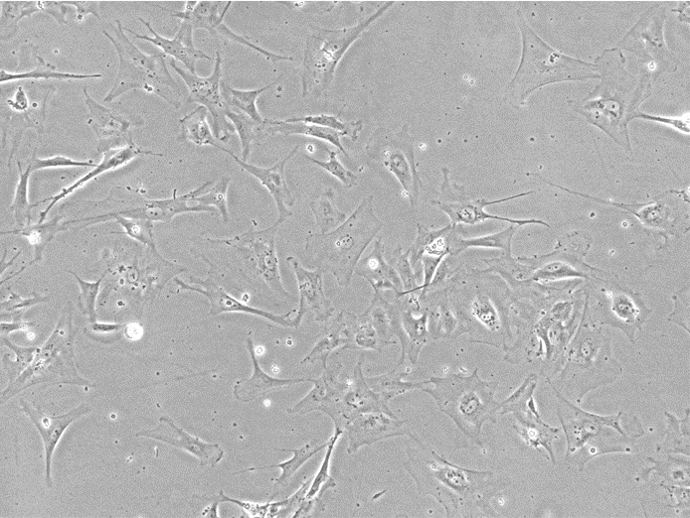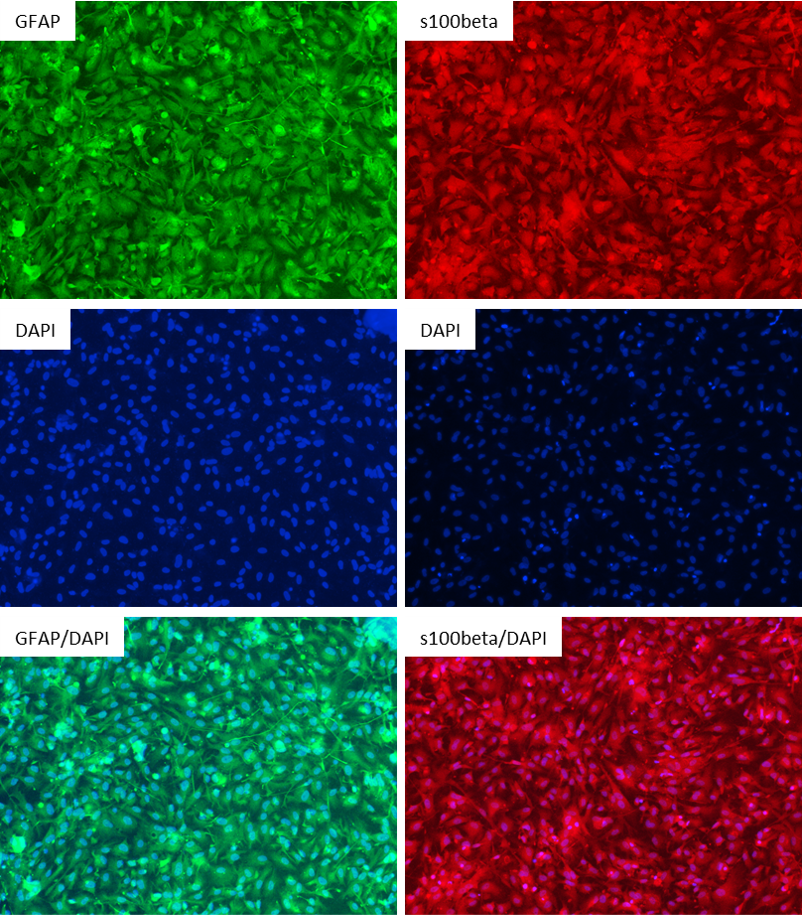Newsletter
iPSC-derived Astrocytes
Astrocytes are the most abundant glial cells found in the central nervous system and spinal cord and are involved in neuronal development, neuronal metabolism, neurotransmitter synthesis, and synaptic function. They play a critical role in repair and neurogenesis during CNS and spinal cord injury, and astrocyte dysfunction has also been implicated in many debilitating CNS disorders such as Parkinson’s disease (PD), Alzheimer’s disease, Amyotrophic lateral sclerosis, and Huntington’s disease.
Applied StemCell offers well-characterized astrocytes derived from the control iPSC line, ASE-9211, that are ideal for comparative evaluation of drug efficacy, toxicity, gene profiling, and construction of complex, functional in vitro neurological models.
Advantages of choosing ASC’s iPSC-derived astrocytes:
- Stained with the astrocyte markers GFAP and s100betacells
- Present typical astrocyte morphology
- Expression of astrocyte markers confirmed by immunocytochemistry
- Suitable for co-culturing with neurons for complex tissue modeling
- Limited proliferative potential and long-term viability
- Xeno-free & Integration-free derivation and culturing
- GMP iPSC Products & Services >> Learn More
Custom Differentiation Service for iPSC-derived Astrocytes: We offer direct differentiation of your control/patient/engineered iPSC lines into neural stem cells. Service includes full characterization of the derived cell line.
Products and Services
Case Studies
Case Study 1:
Characterization of iPSC-derived Astrocytes (ASE-9743)
Project Description:
- To differentiate astrocytes from Applied StemCell’s NIST Control Line, ASE-9211
Timeline:
- iPSC Recovery & Expansion
- Astrocyte Differentiation
- Antibody Staining (GFAP+, S100beta) (Flow Cytometry is Available if Inquired)
Turnaround time: 3-4 months

Figure 1. Bright Field Image of iPSC-derived Astrocytes from Applied StemCell’s (ASC's)Control Line, ASE-9211.

Figure 2: Antibody Staining of the Astrocytes differentiated from the NIST Control Line, ASE-9211. The astrocytes differentiated from the ASC's iPSC line were stained with the astrocyte markers GFAP and s100beta. Left Three Images: Top Image: GFAP (Green), Middle Image: DAPI (Blue), Bottom Image: GFAP (Green) & DAPI (Blue); Right Three Images: Top Image: s100beta (Red), Middle Image: DAPI (Blue), Bottom Image: s100beta (Red) & DAPI (Blue)
Application Notes
Benefits & Applications:
- Physiologically relevant models for studying neurogenesis and CNS function
- A reliable and consistent source of in vitro models for drug screening & neurotoxicity tests
- Build disease models of neurodegenerative diseases and neuroinflammation
- Co-culture with neurons to improve neuronal viability in cell therapy studies
Publications
Shaltouki, A., Sivapatham, R., Pei, Y., Gerencser, A. A., Momčilović, O., Rao, M. S., & Zeng, X. (2015). Mitochondrial alterations by PARKIN in dopaminergic neurons using PARK2 patient-specific and PARK2 knockout isogenic iPSC lines. Stem cell reports, 4(5), 847-859.
Efthymiou, A. G., Steiner, J., Pavan, W. J., Wincovitch, S., Larson, D. M., Porter, F. D., ... & Malik, N. (2015). Rescue of an in vitro neuron phenotype identified in Niemann-Pick disease, type C1 induced pluripotent stem cell-derived neurons by modulating the WNT pathway and calcium signaling. Stem cells translational medicine, 4(3), 230-238.
Efthymiou, A., Shaltouki, A., Steiner, J. P., Jha, B., Heman-Ackah, S. M., Swistowski, A., ... & Malik, N. (2014). Functional screening assays with neurons generated from pluripotent stem cell–derived neural stem cells. Journal of biomolecular screening, 19(1), 32-43.
Shaltouki, A., Peng, J., Liu, Q., Rao, M. S., & Zeng, X. (2013). Efficient generation of astrocytes from human pluripotent stem cells in defined conditions. Stem cells, 31(5), 941-952.
FAQs
Are the cells mature Astrocytes or APCs?
Can I passage the cells?
The media provided with the kit is for maturation or I need to use my own media for maturation?
How long does it take the cells to fully differentiate/mature?
What culture conditions (initial density and min/max time to wait after plating 96) are a bit more precise in order to have mature cells and "nice" Immunofluorescence images (as illustrated in your datasheet).



